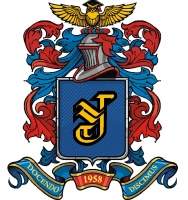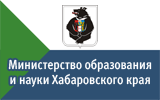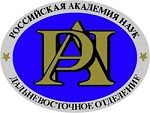Дальневосточный математический журнал
Establishment of a global three-dimensional kinematic reference frame using VLBI and DORIS data |
M. D. Gerasimenko, A. G. Kolomiets, M. Kasahara, J.-F. Cr?taux, L. Soudarin |
2005, выпуск 1-2, С. 3–13 |
Аннотация |
| The main aim of this paper is to provide an algorithm to combine VLBI (Very Long Baseline Interferometry) and DORIS (Doppler Orbitography and Radio positioning Integrated by Satellite) data sets into the same kinematics reference frame. In a first stage of computation the VLBI and DORIS networks are knitted together using the velocities of each station with their covariance matrices that were obtained from individual solutions. A sequential least squares adjustment was used. In a second stage of computation a method of iterative weighted similarity transformation has been elaborated. In order to fix the three-dimensional kinematic reference frame (KRF), a system of constraints or datum equations based on vertical component of some quasi-stable reference stations are used. This strategy provides a datum that is robust to unstable reference points and gives less distorted displacements. This method has been applied to the VLBI and DORIS data collected during the last decades. Without survey ties available, and consequently without relative velocities between collocated VLBI and DORIS points, we forced the velocities of collocated sites to the same value and constrained their root mean squares to be equal to zero. As VLBI information is formally for some stations ten times more precise than the DORIS information, reference frame and precision of the VLBI stations were practically not affected by this computation. But precision of DORIS station velocities of the joint network is improved by almost 15% and fairly close agreement between ITRF2000 solution, NNR Nuvel-1A model predictions, and our solution has been found. The technique presented provides a method to define KRF without any information from a geological plate motion model. It is thus possible to verify any geological model using only geodetic information itself. |
Ключевые слова: linear transformations, matrix inversion, general inversion, kinematic reference frame, NNR NUVEL-1A plate model, VLBI, DORIS, ITRF2000 |
Полный текст статьи (файл PDF) |
Библиографический список |
| [1] Z. Altamini, P. Sillard, C. Boucher, “A new release of the International Terrestrial Reference Frame for earth science applications”, ITRF2000, J. Geohys. Res., 107:B10, 2214 (2002), 2–19. [2] D. F. Argus, W. R. Peltier, M. M. Watkins, “Glacial isostatic adjustment observed using very long baseline interferometry and satellite laser ranging geodesy”, J. Geophys. Res., 104:B12 (1999), 29077–29093. [3] S. Calmant, J.-J. Valette, J.-F. Cretaux, L. Soudarin, “Tectonic plate motion and co-seismic steps surveyed by DORIS field beacons: the New Hebrides experiment”, Journal of Geodesy, 74 (2000), 512–518. [4] A. Cazenave, K. Dominh, F. Ponchaut, L. Soudarin, J.-F. Cretaux, C. Le Provost, “Sea level changes from Topex-Poseidon altimetry and tide gauges, and vertical crustal motions from DORIS”, Geophys. Res. Lett., 26 (1999), 2077–2080. [5] Y.Q. Chen, A. Chrzanowski, J. M. Secord, “A strategy for the analysis of the stability of reference points in deformation surveys”, CISM journal ACSGC, 44:2 (1990), 141–149. [6] M. R. Craymer, P. Vanicek, “Netan – a computer programm for the interactive analysis of geodetic networks”, CISM journal ACSGC, 43:2 (1988), 25–37. [7] J.-F. Cretaux, L. Soudarin, A. Cazenave, F. Bouille, “Present-day tectonic plate motions and crustal deformations from the DORIS space system”, J. Geophys. Res., 103 (1998), 30167–30181. [8] P. Davies, G. Blewitt, “Methodology for global geodetic time series estimation: A new tool for geodynamics”, J. Geophys. Res., 105:B5 (2000), 11083–11100. [9] M. D. Gerasimenko, “Multigroup correlate method for adjustment of geodetic networks”, Geodesy and airphotosurveing, 5 (1977), 57–60 (in Russian). [10] M. D. Gerasimenko, “Adjustment of large geodetic networks by the multigroup correlate method”, Geodesy, Mapping and Photogrammetry, 20:1 (1978), 14–16. [11] M. D. Gerasimenko, Optimal design and adjustment of geodetic networks, Nauka, Moscow, 1992, 160 pp. (in Russian). [12] M. D. Gerasimenko, Contemporary least squares adjustment with geodetic applications, Dalnauka, Vladivostok, 1998, 101 pp. (in Russian). [13] M. D. Gerasimenko, M. Kasahara, “Tectonic plate motion and deformation by space geodesy measurements (on the question of fixing kinematic reference frame)”, Geology of the Pacific Ocean, 21:1 (2002), 3–13 (in Russian). [14] M. D. Gerasimenko, T. Kato, “Establishment of the three-dimensional kinematics reference frame by space geodetic measurements”, Earth, Planets and Space, 52 (2000), 959–963. [15] K. Heki, “Horizontal and vertical crustal movements from three-dimensional very long baseline interferometry kinematic reference frame: Implication for the reversal timescale revision”, J. Geophys. Res., 101:B2 (1996), 3187–3198. [16] ITRF2000, http://lareg.ensg.ing.fr/ITRF/ITRF2000/results/ITRF2000. [17] S. Mangiarotti, A. Cazenave, L. Soudarin, J-F. Cretaux, “Annual vertical crustal motions predicted from surface mass redistribution and observed by space geodesy”, J. Geophys. Res., 106 (2001), 4277–4291. [18] F. Nouel, J.-P. Berthias, M. Deleuze, A. Guitard, P. Laudet, A. Piuzzi, D. Pradines, C. Valorge, “Precise Centre National d'Etudes Spatiales orbits for Topex/Poseidon: is reaching 2 cm still a challenge?”, J. Geophys. Res., 99 (1994), 12. [19] P. Sillard, C. Boucher, “A review of algebraic constraints in terrestrial reference frame datum definition”, Journal of Geodesy, 75:2001, 63–73. [20] L. Soudarin, A. Cazenave, “Global geodesy using doris data on Spot-2”, Geophys. Res. Lett., 20 (1993), 289–292. [21] L. Soudarin, A. Cazenave, “Large scale tectonic plate motions measured with the DORIS space geodesy system”, Geophys. Res. Lett., 22 (1995), 469–472. [22] L. Soudarin, J.-F. Cretaux, A. Cazenave, “Vertical crustal motions from the DORIS space geodesy system”, Geophys. Res. Lett., 26 (1999), 1207–1210. [23] Y. Takahashi, “Differences of station velocities obtained by GSFC and IERS from those predicted by the nnr-NUVEL1A model and crustal deformation near plate boundaries”, J. Geod. Soc. Japan., 45:1 (1999), 9–29. [24] J. Van Mierlo, “Free network adjustment and S-transformations”, Deutsche Geodatische Kommission, 252:B (1980), 41–54. |






